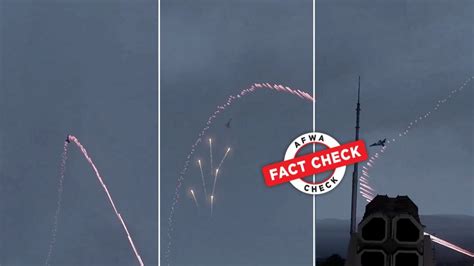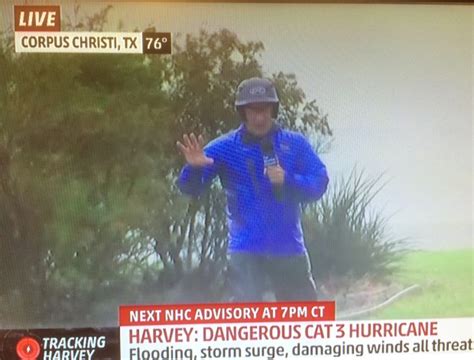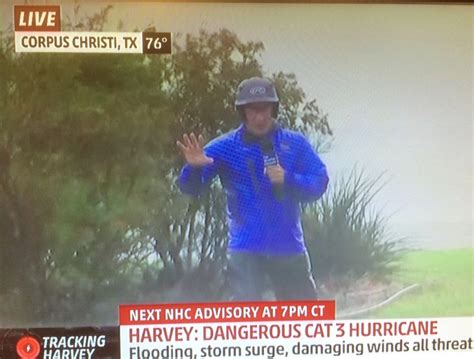
Claims circulating online that Iran shot down an Israeli F-35 fighter jet are false; the viral image accompanying the claims is old and unrelated to any recent events involving Iran and Israel. A fact check by Yahoo News has debunked the misleading narrative, confirming the image predates the current tensions.
Social media users have been widely sharing a photograph purportedly showing the wreckage of an Israeli F-35, alleging it was downed by Iranian forces. These claims, amplified across platforms like X (formerly Twitter) and Facebook, have gained significant traction, fueled by heightened tensions in the Middle East. However, a reverse image search reveals the photograph is not recent and has no connection to any alleged downing of an Israeli F-35 by Iran.
According to Yahoo News, “The image has been circulating online for years and is not related to any recent events.” The fact check confirms that the image has appeared in various contexts, including discussions about military exercises and aviation accidents unrelated to Iran or Israel.
The spread of this misinformation highlights the challenges of verifying information in real-time, especially during periods of geopolitical instability. The viral claim coincided with increased regional tensions, making it more likely to be believed and shared without proper scrutiny. Social media’s rapid dissemination of unverified information can lead to confusion and potentially exacerbate existing tensions.
The false claim also underscores the importance of relying on credible news sources and fact-checking organizations to verify information before sharing it online. In an era of increasing disinformation, critical thinking and media literacy are essential skills for navigating the digital landscape.
The U.S. military and Israeli defense forces have not issued any statements confirming the downing of an F-35. The absence of official reports further supports the conclusion that the viral claim is false. Major media outlets, which typically report on significant military events, have also not reported on any such incident.
Debunking the Claim: A Detailed Analysis
The claim that Iran downed an Israeli F-35 is based on a single piece of visual evidence: a photograph of what appears to be an aircraft wreckage. This image, circulated widely on social media platforms, lacks crucial context and has been misrepresented to support the false narrative. Fact-checking initiatives have been instrumental in tracing the origins of the image and revealing its true history.
Reverse image searches, a primary tool in debunking misinformation, quickly revealed that the photograph had been circulating online for several years. Different iterations of the image have appeared in various online forums and news articles, often associated with different aviation incidents. This inconsistency immediately raises red flags about the image’s authenticity and relevance to the current claim.
Further investigation revealed that the image has been used in discussions related to military exercises, aviation accidents, and even fictional scenarios. Its presence in unrelated contexts strongly indicates that it does not depict the wreckage of an Israeli F-35 downed by Iran.
Moreover, official sources have remained silent on the matter. Neither the Israeli Defense Forces (IDF) nor the United States military has issued any statements confirming the loss of an F-35. In such a significant event, official confirmation would be expected, along with detailed reports and investigations. The absence of such reports further undermines the credibility of the claim.
The Role of Social Media in Spreading Misinformation
Social media platforms have become breeding grounds for misinformation, particularly during times of heightened political and social tensions. The rapid and widespread dissemination of unverified information can have serious consequences, fueling confusion, anxiety, and even inciting violence.
The claim about the downed Israeli F-35 is a prime example of how misinformation can spread like wildfire on social media. The image, coupled with a sensationalist narrative, quickly gained traction, amplified by users who shared it without verifying its authenticity. The lack of contextual information and the emotional appeal of the claim contributed to its rapid spread.
Social media algorithms often prioritize engagement over accuracy, meaning that sensational and emotionally charged content is more likely to be seen and shared. This creates a fertile ground for misinformation to flourish, as false claims can quickly reach a large audience before they are debunked.
Furthermore, social media platforms often lack effective mechanisms for identifying and removing misinformation. While some platforms have implemented fact-checking initiatives, these efforts are often insufficient to stem the tide of false information. The sheer volume of content and the speed at which it spreads make it difficult to effectively monitor and moderate social media platforms.
The Geopolitical Context: Heightened Tensions in the Middle East
The spread of the false claim about the downed Israeli F-35 occurred against a backdrop of heightened tensions in the Middle East. The region has been grappling with a complex web of conflicts and rivalries, involving various state and non-state actors.
Iran and Israel have been engaged in a long-standing shadow war, characterized by covert operations, cyberattacks, and proxy conflicts. The two countries have clashed over a range of issues, including Iran’s nuclear program, its support for regional proxies, and its opposition to Israel’s existence.
In recent months, tensions between Iran and Israel have escalated, with both sides engaging in increasingly provocative actions. These actions have raised concerns about the potential for a direct military confrontation between the two countries.
The false claim about the downed Israeli F-35 served to exacerbate these tensions, fueling speculation about a potential escalation of the conflict. The claim was particularly dangerous because it could have been interpreted as a sign of an imminent attack, potentially triggering a retaliatory response.
The F-35: A Symbol of Military Superiority
The F-35 Lightning II is a fifth-generation fighter jet developed by Lockheed Martin. It is considered one of the most advanced and sophisticated military aircraft in the world, incorporating stealth technology, advanced sensors, and powerful computing capabilities.
The F-35 has become a symbol of military superiority, and its acquisition by various countries has been a source of both pride and concern. Israel was one of the first countries to acquire the F-35, and its fleet of these aircraft has significantly enhanced its military capabilities.
The claim that an Israeli F-35 had been shot down by Iran was particularly significant because it challenged the perceived invincibility of the aircraft. If true, it would have been a major blow to Israel’s military prestige and could have had significant implications for the balance of power in the region.
The Importance of Critical Thinking and Media Literacy
The spread of the false claim about the downed Israeli F-35 underscores the importance of critical thinking and media literacy in the digital age. In a world saturated with information, it is essential to be able to evaluate sources, identify bias, and distinguish between fact and fiction.
Critical thinking involves questioning assumptions, analyzing evidence, and forming reasoned judgments. It requires a willingness to challenge conventional wisdom and to consider alternative perspectives.
Media literacy involves understanding how media messages are constructed and how they can influence our perceptions and beliefs. It requires the ability to identify different types of media, to evaluate their credibility, and to recognize the potential for bias and manipulation.
By developing critical thinking and media literacy skills, we can become more informed and responsible consumers of information, less susceptible to misinformation, and better equipped to navigate the complexities of the digital world.
The Consequences of Misinformation
Misinformation can have a wide range of negative consequences, both for individuals and for society as a whole. It can lead to confusion, anxiety, and fear. It can undermine trust in institutions and erode social cohesion. It can even incite violence and conflict.
In the case of the false claim about the downed Israeli F-35, the potential consequences were particularly serious. The claim could have exacerbated tensions between Iran and Israel, potentially leading to a dangerous escalation of the conflict. It could also have undermined public trust in the media and in government institutions.
Combating Misinformation: A Multi-Faceted Approach
Combating misinformation requires a multi-faceted approach, involving individuals, media organizations, social media platforms, and government agencies.
Individuals can play a crucial role by developing critical thinking and media literacy skills, by verifying information before sharing it, and by reporting misinformation to social media platforms and fact-checking organizations.
Media organizations have a responsibility to report accurately and responsibly, to avoid sensationalism and bias, and to correct errors promptly.
Social media platforms need to implement effective mechanisms for identifying and removing misinformation, for promoting media literacy, and for working with fact-checking organizations to debunk false claims.
Government agencies can support these efforts by funding media literacy programs, by promoting transparency and accountability, and by working with international partners to combat disinformation campaigns.
Conclusion: Vigilance in the Digital Age
The false claim about the downed Israeli F-35 serves as a stark reminder of the challenges of navigating the digital age. In a world saturated with information, it is essential to be vigilant, to question assumptions, and to verify information before sharing it.
By developing critical thinking and media literacy skills, by relying on credible sources of information, and by supporting efforts to combat misinformation, we can help to create a more informed and responsible society. The incident highlights the need for continuous vigilance against misinformation, especially in contexts of geopolitical tension. The ease with which false narratives can spread underscores the responsibility of individuals and institutions to promote media literacy and critical thinking.
Frequently Asked Questions (FAQ)
Q1: Did Iran actually shoot down an Israeli F-35 fighter jet recently?
A: No, there is no credible evidence to support this claim. The viral image associated with these claims is old and unrelated to any recent events between Iran and Israel. Fact checks have debunked this narrative.
Q2: Where did the image circulating online come from?
A: The image has been circulating online for several years and has been used in various contexts unrelated to Iran or Israel. It has appeared in discussions about military exercises, aviation accidents, and even fictional scenarios.
Q3: Why did this false claim spread so quickly?
A: The claim spread quickly due to heightened tensions in the Middle East, making it more likely for people to believe and share the information without verifying its accuracy. Social media algorithms also prioritize engagement, often amplifying sensational and emotionally charged content.
Q4: What should I do if I see similar claims online?
A: First, be skeptical. Do not share the information without verifying it. Use reverse image search tools to check the origin and context of images. Consult credible news sources and fact-checking websites to confirm the information before sharing it with others.
Q5: What are the potential consequences of spreading misinformation like this?
A: Spreading misinformation can exacerbate tensions, incite violence, and erode trust in institutions and media. In this specific case, it could have contributed to a dangerous escalation of conflict between Iran and Israel. It is crucial to be responsible and verify information before sharing it to avoid contributing to these negative consequences.









